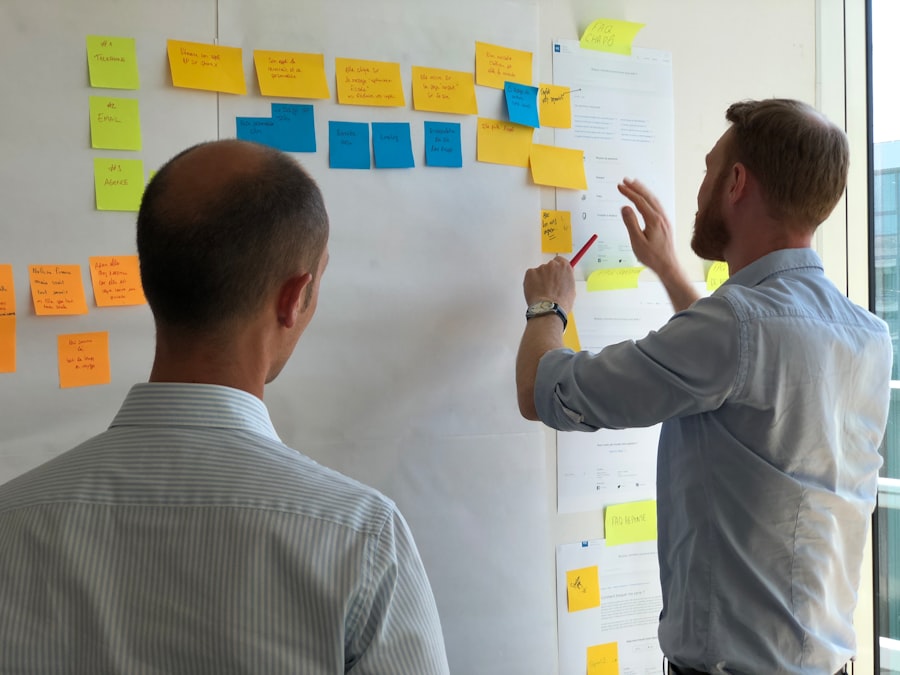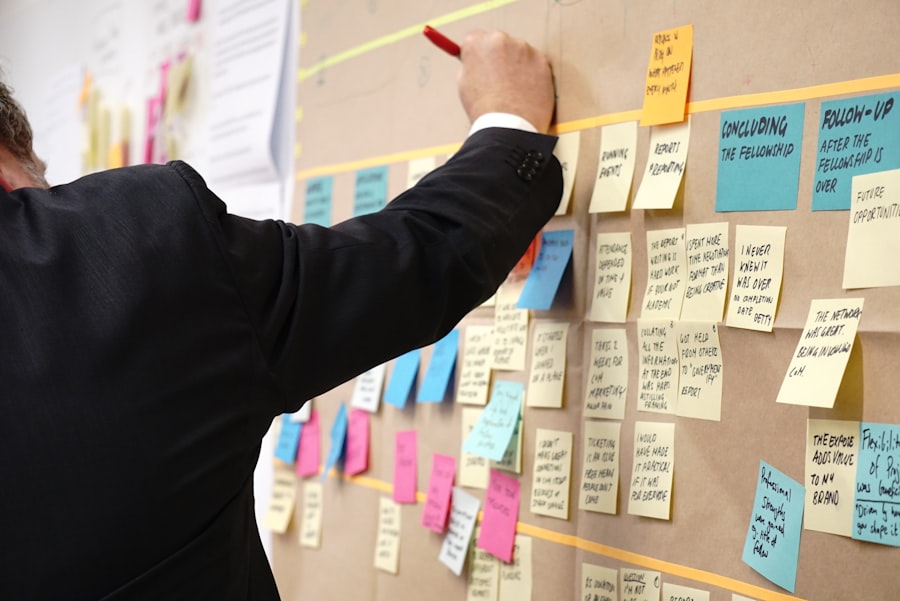As educators, we recognize that our classrooms are a tapestry of diverse student needs, each thread representing unique backgrounds, abilities, and learning styles. Understanding these differences is crucial for fostering an inclusive environment where every child can thrive. For instance, students with autism may require specific communication strategies, while those with ADHD might benefit from structured routines and clear expectations.
By taking the time to learn about the various challenges and strengths our students possess, we can tailor our approaches to meet their individual needs effectively. This understanding not only enhances our teaching practices but also builds a foundation of trust and respect between us and our students. Moreover, we must acknowledge that diverse student needs extend beyond academic challenges.
Factors such as cultural background, socioeconomic status, and family dynamics play significant roles in shaping a child’s educational experience. For example, a student from a low-income household may face barriers that affect their ability to focus in class or complete homework assignments. By being aware of these external influences, we can better support our students holistically.
This awareness encourages us to create a learning environment that is not only academically enriching but also emotionally supportive, allowing all students to feel valued and understood.
Adapting Teaching Strategies
In our journey as educators, adapting our teaching strategies to accommodate diverse learning needs is paramount. We must embrace flexibility in our instructional methods, recognizing that a one-size-fits-all approach is often ineffective. For instance, when teaching a complex concept, we might employ a variety of instructional techniques such as visual aids, hands-on activities, and collaborative group work.
By diversifying our teaching methods, we cater to different learning styles—visual learners may benefit from diagrams, while kinesthetic learners thrive through interactive experiences. This adaptability not only enhances comprehension but also fosters a sense of engagement among our students. Additionally, we can leverage formative assessments to gauge student understanding and adjust our strategies accordingly.
By regularly checking in with our students through quizzes, discussions, or informal observations, we can identify areas where they may be struggling and provide targeted support. This responsive approach allows us to modify our lessons in real-time, ensuring that all students are progressing at their own pace. Furthermore, incorporating tools like our COCO THINKS and COCO MOVES app can significantly enhance this process.
Designed specifically for children with special needs such as autism, ADHD, dyslexia, and Down syndrome, these educational apps offer tailored activities that promote cognitive and physical development. By integrating technology into our teaching strategies, we can create a more dynamic and inclusive learning experience.
Cultivating Cultural Competence

Cultural competence is an essential skill for us as educators in today’s diverse classrooms. It involves understanding and appreciating the cultural backgrounds of our students while recognizing how these backgrounds influence their learning experiences. By actively seeking to learn about the cultures represented in our classrooms, we can create a more inclusive environment that respects and values diversity.
This might involve incorporating multicultural literature into our curriculum or celebrating various cultural holidays throughout the school year. Such practices not only enrich our students’ educational experiences but also foster a sense of belonging among all learners. Furthermore, cultivating cultural competence requires us to reflect on our own biases and assumptions.
We must be willing to engage in difficult conversations about race, privilege, and inequality to better understand how these factors impact our students’ lives. By doing so, we can create a safe space for open dialogue where students feel comfortable sharing their experiences and perspectives. This not only enhances our relationships with students but also empowers them to take pride in their identities.
Ultimately, by embracing cultural competence, we can help our students develop empathy and respect for one another, laying the groundwork for a more harmonious classroom environment.
Creating Inclusive Learning Environments
Creating inclusive learning environments is at the heart of our mission as educators. We strive to ensure that every student feels welcomed and valued within our classrooms. This begins with establishing clear expectations for behavior and communication that promote respect and understanding among peers.
By modeling inclusive language and encouraging collaboration among students from different backgrounds, we foster a sense of community that transcends individual differences. Additionally, we can implement flexible seating arrangements and varied groupings to facilitate collaboration and interaction among all learners. Moreover, we must be proactive in addressing any barriers that may hinder inclusivity within our classrooms.
This includes providing necessary accommodations for students with disabilities or special needs. For instance, utilizing assistive technologies or modifying assignments can help ensure that all students have equal access to learning opportunities. Our COCO THINKS and COCO MOVES app serves as an excellent resource in this regard, offering engaging activities tailored to the unique needs of children with special needs.
By integrating such tools into our teaching practices, we can create an environment where every student has the opportunity to succeed.
Utilizing Technology for Differentiated Instruction
In today’s digital age, technology plays a pivotal role in enhancing differentiated instruction within our classrooms. We have access to an array of tools and resources that allow us to tailor our teaching methods to meet the diverse needs of our students effectively. For instance, educational apps like COCO THINKS and COCO MOVES provide interactive activities designed specifically for children with special needs such as autism and ADHD.
These apps not only engage students but also offer personalized learning experiences that cater to their individual strengths and challenges. Furthermore, technology enables us to track student progress more efficiently than ever before. With data analytics tools at our disposal, we can monitor individual performance and identify areas where additional support may be needed.
This data-driven approach allows us to make informed decisions about instructional strategies and interventions tailored to each student’s unique learning profile. By harnessing the power of technology in this way, we can create a more responsive and effective learning environment that empowers all students to reach their full potential.
Collaborating with Colleagues and Community

Collaboration is essential for us as educators striving to meet the diverse needs of our students effectively. Working together with colleagues allows us to share best practices, resources, and insights that enhance our teaching approaches. For instance, by collaborating with special education teachers or support staff, we can gain valuable perspectives on how to best support students with disabilities or special needs in our classrooms.
This teamwork fosters a culture of continuous improvement where we learn from one another’s experiences and expertise. Additionally, engaging with the broader community is vital for creating a supportive network around our students. By partnering with local organizations or mental health professionals, we can access additional resources that benefit both students and families.
For example, hosting workshops or informational sessions for parents can empower them with strategies to support their children’s learning at home. Furthermore, involving families in the educational process fosters a sense of belonging and encourages open communication between home and school. Ultimately, collaboration—both within our schools and with the community—enriches the educational experience for all involved.
Addressing Social and Emotional Needs
As educators, we must prioritize addressing the social and emotional needs of our students alongside their academic growth. Recognizing that emotional well-being is foundational for effective learning allows us to create a supportive environment where students feel safe expressing themselves. Implementing social-emotional learning (SEL) programs within our curriculum can equip students with essential skills such as self-awareness, empathy, and conflict resolution.
These skills not only enhance interpersonal relationships but also contribute to a positive classroom culture where all students feel valued. Moreover, we must be vigilant in identifying signs of emotional distress among our students. Factors such as bullying or family issues can significantly impact a child’s ability to focus on learning.
By fostering open lines of communication and building trusting relationships with our students, we create an atmosphere where they feel comfortable seeking help when needed. Additionally, utilizing resources like counseling services or mental health professionals can provide crucial support for those facing challenges beyond the classroom setting. Ultimately, by addressing social and emotional needs holistically, we empower our students to thrive both academically and personally.
Reflecting and Growing as Educators
Reflection is an integral part of our growth as educators committed to meeting the diverse needs of our students effectively. Taking time to evaluate our teaching practices allows us to identify areas for improvement while celebrating successes along the way. Engaging in self-reflection encourages us to consider how well we are meeting the needs of all learners in our classrooms—what strategies are working?
What challenges remain? By asking ourselves these questions regularly, we cultivate a mindset of continuous improvement that ultimately benefits our students. Furthermore, seeking professional development opportunities is essential for staying informed about best practices in education.
Attending workshops or conferences focused on inclusive teaching strategies or special education can provide us with valuable insights into new approaches or resources available for supporting diverse learners. Additionally, collaborating with colleagues through peer observations or team meetings fosters an environment of shared learning where we can learn from one another’s experiences. By committing ourselves to ongoing reflection and growth as educators, we ensure that we are equipped to meet the ever-evolving needs of our diverse student population effectively.
In conclusion, understanding diverse student needs is just the beginning of creating an inclusive educational experience for all learners. By adapting teaching strategies, cultivating cultural competence, creating inclusive environments, utilizing technology like COCO THINKS and COCO MOVES apps, collaborating with colleagues and community members, addressing social-emotional needs, and committing ourselves to reflection and growth as educators—we pave the way for every child’s success in their educational journey. Together, we can make a meaningful impact on the lives of all students entrusted to us.
For educators seeking to enhance their understanding and skills in addressing the diverse needs of students, including those with specific conditions like autism, ongoing professional development is crucial. A related resource that can provide valuable insights is an article on the signs of autism in adults. Understanding these signs can help teachers recognize and better support students who may not have been diagnosed in childhood, ensuring a more inclusive and supportive learning environment. You can read more about this topic in the article Signs of Autism in Adults, which offers detailed information that could be beneficial for educators in their professional development.



